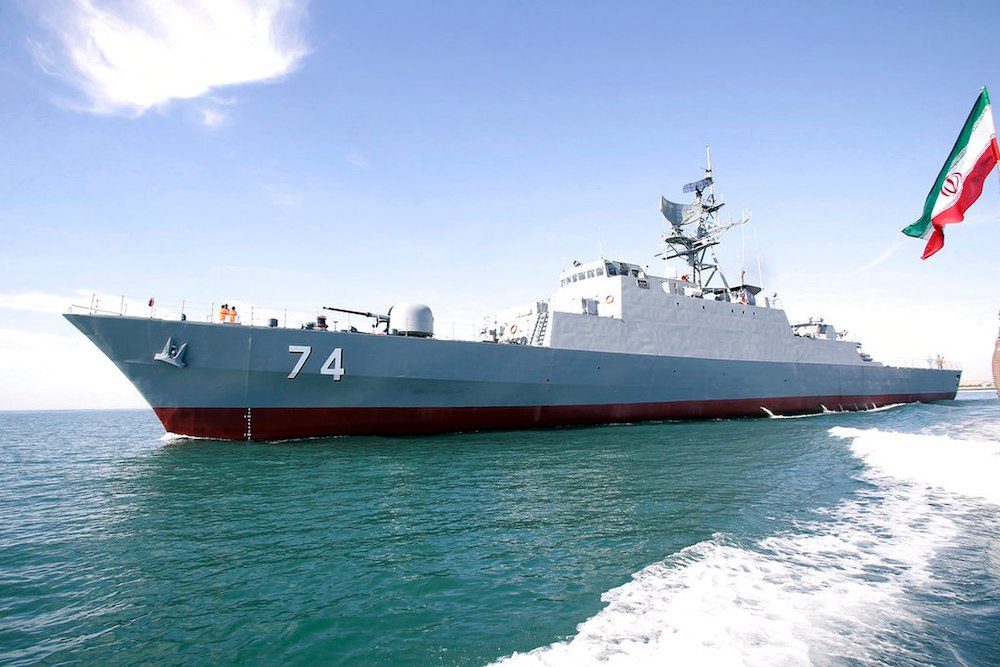
Iran’s Tiny Navy Is Trying to Revive an Empire -Opinion
By James Stavridis (Bloomberg Opinion) — On the campaign trail in 2007, Senator John McCain sang a parody to the tune of the Beach Boys’ “Barbara Ann”: “Bomb, bomb, bomb … bomb, bomb Iran.” That sentiment resonates in the Donald Trump administration, and it’s understandable. The Iranians continue to push their influence throughout the Middle East: using proxies to threaten U.S. allies; supporting Bashar al-Assad in Syria; fueling the war in Yemen through support for Houthi rebels; and seeking to destabilize Iraq and gain further influence in Lebanon.
Now we face a new twist to Iranian expansionism that demonstrates both Tehran’s ambition and its growing ties to Russia: the Iranian navy announced it will undertake a five-month deployment to the western Atlantic. While it’s unclear how many ships will be involved, Tehran says the flotilla will include a newly built destroyer, the Sahand. Some vessels are expected dock in Venezuela, one of the few countries in the Western Hemisphere that would welcome them.
A handful of Iranian combatants in waters close to the U.S. will not send our navy to general quarters, nor should it. Iran’s ships are a couple of generations behind similarly sized U.S. destroyers, and they have nothing remotely like the powerful strike capability of America’s carriers, nuclear submarines and amphibious warships. Nor do they have sophisticated land-attack cruise missiles comparable to U.S. Tomahawks.
But two aspects of the deployment should strike an ominous chord. First, it will undoubtedly be conducted in cooperation with the Russian navy, which has been increasing its patrols in the approaches to the continental U.S. Second, it is an indication of how Iranians truly believe themselves to be a global power.
One problem in forging an Iran strategy is that we do not understand their history, culture and self-image. We see Iran as a moderate-sized regional power with significant natural resources and a fairly large, growing population. But Iranians see themselves as the inheritors of the Persian Empire, which at its peak ruled nearly half of the world’s population. In a slightly different twist of history’s DNA, the Persians would have conquered the Greek city-states 2,500 years ago and potentially stymied the birth and growth of the Roman Empire.
So, is John McCain’s prescription the right one? Not at the moment, and let us hope we do not need to turn to military action. Instead, we should create a coherent strategy for dealing with Iran that rests of three pillars.
First, we need to increase intelligence collection focused on Iran’s internal debates over global strategy. For example, how do the revolutionary guards and the regular military interact? While a great deal can be collected by overhead surveillance and cyber activity, it makes sense to work more closely with our allies’ intelligence services, especially Israel and Jordan. And as we collect data in more depth, we should be applying a historical and cultural filter to extract a more sophisticated and nuanced understanding of Iranian goals.
Working militarily with our allies, partners and friends – both in the region and globally – is a second key. Since the Jimmy Carter administration, this confrontation has largely been the U.S. versus Iran, instead of a global community versus Iran. Much of Tehran’s relentless interference and provocation across the larger Middle East and south-central Asia violates international law, to say nothing of its nuclear program. In the region, Israel and Saudi Arabia are pillars of a coalition that could include many of the other Arab states to face Shiite expansionism. It may be the moment to reopen discussions of an “Arab NATO.”
Third, we must continue to use targeted economic sanctions. Some big nations – including Russia and China – will probably not cooperate. But the U.S. and Europe collectively represent over 50 percent of global GDP. While it remains unclear how the Europeans will ultimately react to the U.S. withdrawal from the Iran nuclear deal, we can bring them back onside by refocusing the international effort on the proxy wars and the ballistic-missile threat.
As for Iran’s navy, it has strong capabilities to create mischief in the Arabian Gulf and the northern Indian Ocean. Iran has stealthy diesel submarines, it employs swarming flotillas of small armed boats to threaten larger warships, and it is very good at employing mines to constrict shipping. But this new deployment to the distant waters off America is a concerning display of advanced capability and ambition. We need to pay attention.
Bombing Iran now would be a grave mistake. Building a more coherent approach that flows from a deeper analysis and understanding of Iranian goals and plans is a better bet. The bombs will be available if that time ever comes.
James Stavridis is a Bloomberg Opinion columnist. He is a retired U.S. Navy admiral and former military commander of NATO, and dean emeritus of the Fletcher School of Law and Diplomacy at Tufts University. He is also an operating executive consultant at the Carlyle Group and chairs the board of counselors at McLarty Associates.
© 2019 Bloomberg L.P













